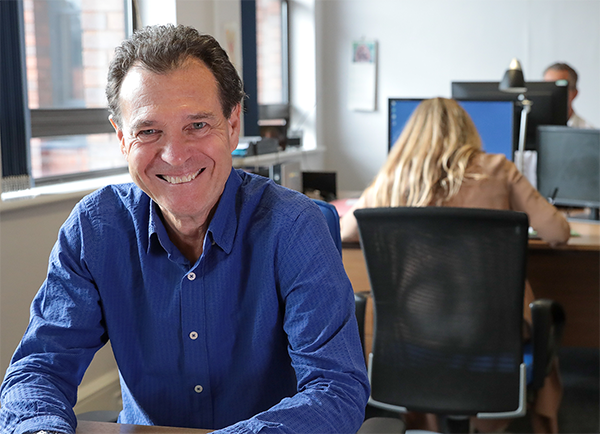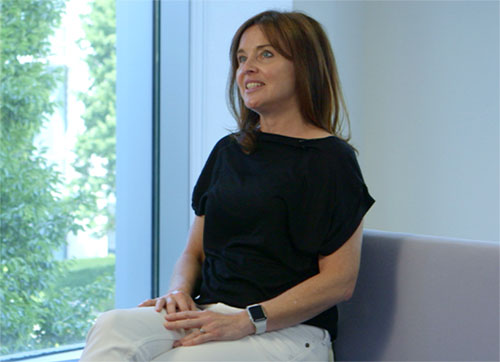So, what could happen?
Unemployment a key leading indicator
One key variable to watch is unemployment; both in the UK and the US. A consecutive month-on-month rise is often a reliable leading indicator that a recession beckons, and that is exactly what we have seen in both countries. In the UK, unemployment has ticked up from 4.4% in January to 4.8% in August. During that same period unemployment in the US rose from 4% to 4.3%.
Granted, these are fairly gentle rises for now, and it is too early to draw clear-cut conclusions. However, investors would do well to keep a close eye on developments, particularly with GDP growth stalling in both countries over recent months. The November UK Autumn budget consequences will be watched carefully for the potential impact on the jobs market in particular.
AI: A sustainable boom or a speculative bubble ready to pop?
Another development that warrants close attention is AI, given that almost all of the best-performing stocks in the S&P 500 this year have been directly tied to the AI boom/bubble.
AI investments are single handedly fuelling growth not just in the US stock market but also for the economy as a whole. US GDP growth in the first half of 2025 was almost exclusively driven by investment in data centres and information processing technology, warns Harvard economist Jason Furman.
Does that mean the AI boom is a speculative bubble ready to pop?
Not necessarily, but the potential is there, especially given the speed and scale of the sector’s growth, as well as the amount of leveraged debt underpinning it. On the other hand, if AI delivers on its promise, both in terms of productivity and growth, the recent rise in tech stocks may represent the beginning of a secular trend, though a correction is probably in order.
For the moment, the jury is still out, but to hedge one’s risk it may be worth seeking out attractive stocks that are not AI-connected, even if they are not performing as strongly, in the short term. Long term, valuations are linked to growth in earnings and the price of earnings streams. Large growth is factored into the AI, chip and technology areas. And, the price to earnings multiple has been expanding, suggesting the market is happy to wait longer for a
payback period, which is somewhat counterintuitive against such a potentially disruptive dawn (AI). Some of this might be explained by an expanded credit market, money supply and stocks being used as an attempt to store real value. However, the growth rates and price to earnings and outlooks might vary materially between sectors so careful positioning in such would be prudent.
Passive vs active?
As clichéd as it may sound, we are living in uncertain times. This is strongly reflected by the high levels of volatility in equity markets and the potential, described above, for increased dislocation in markets and across sectors and individual stocks. At the current levels, the markets feel toppy; with valuations (as measured by the CAPE/Shiller PE ratio) approaching levels last seen during the dot-com bubble and concerningly, somewhat higher than the levels seen in September 1929. As mentioned above the more mature global credit market might explain part of this modern day exuberance. However, it should not pass unobserved for investors concerned about downside risk. Each investor is different but this risk needs to be balanced against the more emotionally driven “fear of missing out - FOMO”. There is a famous example in history of “FOMO” where Sir Isaac Newton lost 50-60% of his liquid assets re-entering the South Sea bubble trade just before it burst, having previously made a fortune from it in the early stages and closed out his position. The example is an insightful lesson that even the brightest minds can sometimes not resist the temptation presented by FOMO!
As passive investing has grown, to the point where it now represents over half of global equity markets by some estimates, there are concerns that it is amplifying not just the volatility in equity markets but also the liquidity risks. During market downturns, stocks with higher ETF passive ownership tend to be more vulnerable to sharp sell offs, as passive funds are forced to sell in unison, amplifying price swings and reducing market liquidity adequacy (in terms of demand not meeting supply in such instances). It’s conceivable that a sell off of sufficient magnitude therefore becomes amplified to the point of market panic. A recent example of this was seen in the UK government bond markets in 2022.
Actively managed portfolios have in theory a greater opportunity to outperform passively managed portfolios when volatility and dispersion is high. However, a recent analysis by Morning Star found that just 33% of actively managed funds beat their average index fund counterparts from July 2024 through June 2025.
The lesson here is that while active funds have the potential to outperform passive funds, that doesn’t mean they necessarily will. The proliferation of active funds, attracted by higher fees, means that some aren’t necessarily going to deliver the goods; hence careful selection is key and understanding the positions being taken and the circumstances what would lead to success or failure are important. Scenario analysis is increasingly used for such but considering all relevant factors quickly descends into high academia and almost too much detail. It’s this complication that has led many investors to seek to keep it simple with index tracking exposures and focusing on ‘bigger picture’ risks. However, in a broad-based sell-off, it would be prudent to give some thought to this, alongside other tail-risk hedging alternatives. Alternatives such as derivative instruments offering contractual downside protection as well as orthogonal safe haven assets held beyond the confines of the equity portfolio.
What of energy prices?
One last thing to keep an eye on in this current equity rally is the global energy complex, which is under increasing strain from the breakneck growth of AI data centres. AI is the primary driver of growth in electricity demand globally, with estimates suggesting data centres could use 945 TWh in 2030. This is roughly similar to the energy needs of Japan, the world’s fourth largest economy.
Ever since the outbreak of war in Ukraine, surging energy and food prices have become a major problem for global consumers. In Europe, the rapid rise of electricity prices since 2022 has accelerated the region’s industrial decline, with its largest economy, Germany, still mired in its longest period of economic stagnation since the Second World War.
Where energy prices go next will depend not just on demand pressures but also supply factors, in particular geopolitical developments.
For example, will Trump deliver on his pledge to seek an end to the war in Ukraine?
If he does and were to be successful, that could provide a much-needed relief valve for global energy (and other) markets. For the moment, however, there is little sign of progress in the negotiations. Indeed, the US just imposed new sanctions on Russian oil, triggering fresh supply fears and a sharp rise in global oil prices.
All else being equal, the hoped-for fledgling peace in the Middle East should be positive for energy (oil) prices, but OPEC’s actions can materially impact this market so should be monitored alongside other developments. The situation in Venezuela (and similarly discussions regarding exploration of the Arctic seabed) could also be highly relevant with one eye on the longer-term energy needs of the planet.
Given the heightened potential for geopolitical events to cause further market disruption and dislocations down the road, it’s hard to see energy prices coming down any time soon.












